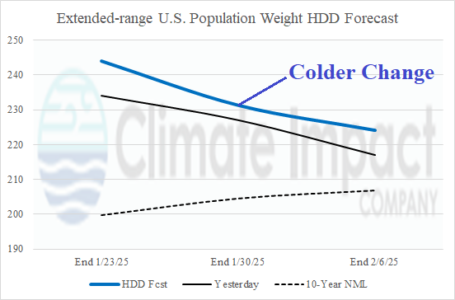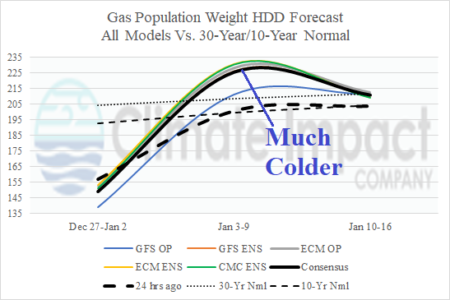12/30/2024, 4:28 am EST
The cold burst into the East during the first half of January biases the previous January 2025 temperature anomaly outlook slightly colder in the East and the adjustment is indicated above. A La Nina climate is developing and should bias the East U.S. warmer in February while cold risk shifts to the northwest quadrant of the U.S.




